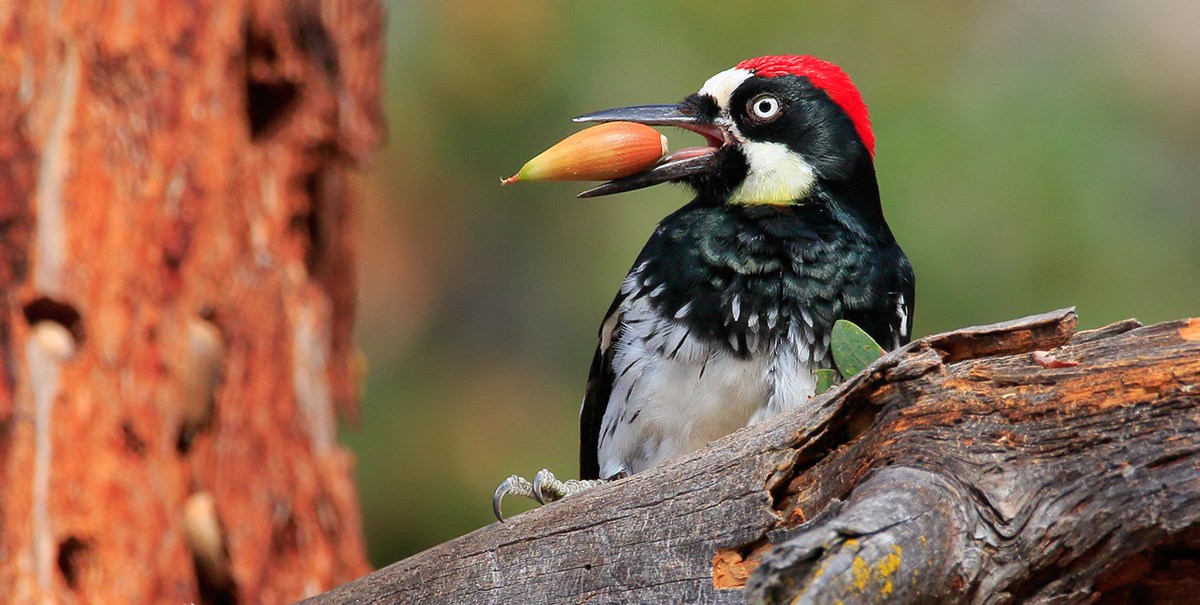Discover the Fascinating Globe of Woodpeckers: Everything You Need to Know
The world of woodpeckers is a world filled up with unique habits, detailed adjustments, and a diverse range of species. From their habitats and circulation patterns to their feeding practices and specialized anatomical features, woodpeckers have long astounded the interest of ornithologists and nature lovers alike.
Woodpecker Habitats and Circulation
In North America, for instance, woodpeckers can be spotted in both coniferous and deciduous woodlands, utilizing their solid beaks to forage for insects and develop nesting dental caries in trees. In Africa, certain woodpecker varieties have actually adapted to arid atmospheres, such as the acacia forests, where they play a vital function in controlling insect populaces.

Feeding Behaviors and Diet Regimen
Amongst the various elements of their habits, woodpeckers display distinct feeding habits and dietary preferences. These birds are largely insectivores, with a diet regimen that consists of ants, beetles, caterpillars, and other bugs located in trees. Woodpeckers utilize their solid beaks to pierce into the bark of trees, probing for bugs and larvae concealed beneath the surface. In addition to pests, woodpeckers also eat nuts, seeds, fruits, and sap. Some varieties have specialized tongues with barbed pointers that assist them remove bugs from holes in wood.
Woodpeckers are understood for their drumming habits, which offers not only to connect with other woodpeckers however likewise to find food. The quick drumming sound is created by the bird pecking on resonant surface areas like dead trees or metal poles. This behavior can attract bugs concealed in the wood, permitting the woodpecker to detect their existence and feed on them.
Distinct Adjustments for Tree Climbing
In their skilled quest of pests concealed within tree bark, woodpeckers have actually advanced exceptional anatomical attributes that furnish them with distinct adjustments for efficient tree climbing. Woodpeckers have solid neck muscles and an unique skull structure that take in the impact of constant pecking, enabling them to climb vertically without causing harm to their brains. These adaptations showcase the incredible transformative layout that allows woodpeckers to browse trees with accuracy and performance.
Diverse Woodpecker Species Worldwide
With over 200 various species spread out across different environments worldwide, the household of Picidae encompasses an impressive diversity of woodpeckers. These birds can be found in forests, timberlands, savannas, and even metropolitan locations, showcasing their flexibility to different environments. From the famous Northern Flicker in The United States And Canada to the colorful and elusive Crimson-backed Flameback in Asia, each woodpecker species displays distinct attributes in regards to tuft, behavior, and environment top article choice.
Woodpeckers vary substantially in size, with the petite Downy Woodpecker gauging around 6-7 inches in length, while the effective Lineated Woodpecker can rise to 17 inches - Woodpeckers in Florida. Their beaks also can be found in different forms and dimensions, reflecting their feeding behaviors. Some varieties focus on drawing out insects from tree bark, like the Acorn Woodpecker, while others, such as the Black-cheeked Woodpecker, feed upon fruits and seeds

Preservation Initiatives and Difficulties
Preservation initiatives for woodpecker populations are important in reducing the influence of habitat loss and various other dangers encountering these diverse avian varieties. Woodpeckers deal with different challenges to their survival, mostly because of logging, urbanization, environment modification, and invasive varieties. To address these issues, conservation efforts concentrate on protecting and recovering woodpecker environments, executing lasting forestry practices, and increasing understanding about the value of these birds in ecosystems.
One significant obstacle in woodpecker preservation is the fragmentation of their habitats, causing isolated populaces that are much more at risk to extinction - Woodpeckers in Florida. Conservationists work to develop wildlife hallways and shielded areas that link these fragmented habitats, enabling woodpeckers to move in between various areas for her comment is here feeding, breeding, and sanctuary

Conclusion
In conclusion, woodpeckers are fascinating birds with one-of-a-kind adjustments for tree climbing and feeding actions. More research and preservation activities are needed to make sure the survival of woodpeckers in official statement the wild.